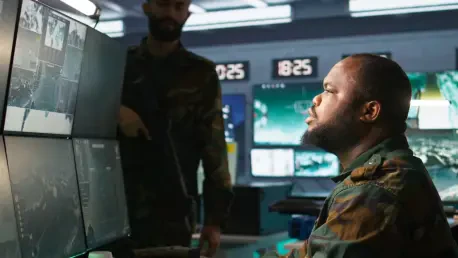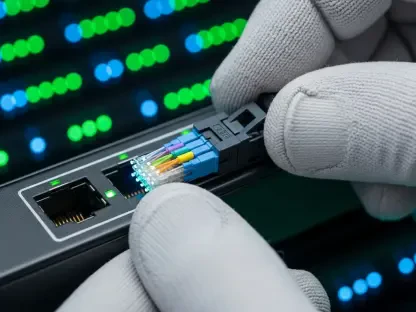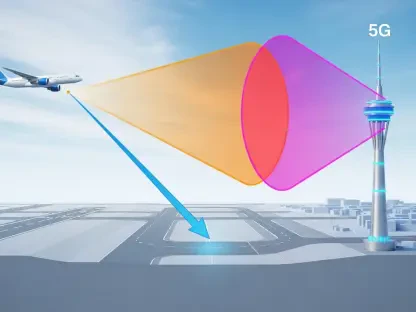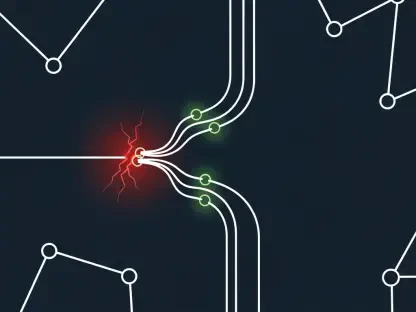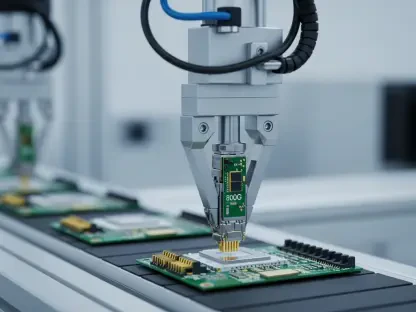In recent developments, Bittium and Nokia have collaborated to unveil a cutting-edge hybrid tactical communication network for the Finnish Defense Forces. This strategic initiative aims to modernize battlefield communications by effectively blending traditional and modern technologies. Vladislav Zaimov, a telecommunications specialist with extensive experience in risk management of vulnerable networks, shares his insights into this breakthrough system and its implications for military communications.
Can you explain the key features of the hybrid tactical communication system demonstrated by Bittium and Nokia?
The hybrid tactical communication system developed by Bittium and Nokia stands out for its integration of advanced software-defined radios with secure mobile technology, specifically 4G and 5G. This blend allows for seamless real-time transfer of voice, data, and video, enabling effective communication across varied battlefield scenarios. By bridging legacy systems with modern networks, it enhances operational capabilities while ensuring robust and flexible communication.
How do the Bittium Tactical Wireless IP Network (TAC WIN) and Tough SDR radios enhance communication for the Finnish Defense Forces?
The inclusion of Bittium’s Tactical Wireless IP Network (TAC WIN) and Tough SDR radios is pivotal in strengthening communication for the Finnish Defense Forces. These technologies facilitate reliable connectivity for both soldiers and vehicles, providing a backbone for uninterrupted communication. They allow for quick adaptability in diverse field conditions, ensuring that essential communications are maintained without interruption.
How do Nokia’s 4G/5G “bubbles” integrate with legacy tactical systems to modernize battlefield communications?
Nokia’s 4G and 5G “bubbles” are revolutionary as they offer military-grade communication capabilities that can seamlessly interface with older tactical systems. These bubbles provide localized, secure connectivity that boosts the transmission quality for legacy systems, effectively modernizing the battlefield by allowing traditional and new technologies to work in harmony.
Can you discuss the role of Banshee Mobile Radio (BMR) and Banshee Tactical Radio (BTR) in this hybrid network?
The Banshee Mobile Radio (BMR) and Banshee Tactical Radio (BTR) are integral to the hybrid network, providing mobile connectivity crucial for tactical operations. They ensure that network connectivity can extend into challenging environments, maintaining communication consistency and reliability even when operatives are on the move or deployed in remote locations.
How does the use of portable devices, such as those worn in a backpack by soldiers, contribute to operational success in the field?
Portable devices, like those integrated into soldiers’ backpacks, significantly enhance operational success by offering mobility and versatility. They allow for continuous connectivity and communication while enabling the use of situational awareness applications, ensuring that soldiers have up-to-date information and tools at their fingertips during missions.
In what ways does the Bittium Tough Mobile 2 smartphone support situational awareness and communication?
The Bittium Tough Mobile 2 smartphone plays a critical role by supporting situational awareness applications alongside high-quality voice services through Bittium’s Tough VoIP system. This capability ensures that personnel can communicate effectively and make informed decisions based on real-time data, thereby enhancing mission efficiency and safety.
Can you describe a specific use case where the hybrid network enabled uninterrupted voice communication?
One notable use case demonstrated was the ability to maintain uninterrupted voice communication across various terminals. This capability proved crucial in scenarios that involved rapid movement and dynamic environments, where maintaining a clear line of communication could make the difference between mission success and failure.
What technologies are used to ensure high-quality video transmission and real-time data sharing?
High-quality video transmission and real-time data sharing are achieved through advanced network protocols embedded within the hybrid system. These technologies manage bandwidth effectively and ensure that data integrity is preserved across different nodes, which is vital for delivering reliable, high-definition video feeds and instantaneous data exchange in real-time.
How does this collaboration between Bittium and Nokia highlight the importance of hybrid solutions in modern defense communications?
This collaboration underscores the necessity of hybrid solutions by demonstrating how they can bridge the gap between traditional and innovative technologies. By integrating various systems, they ensure that military communications not only keep pace with technological advancements but also incorporate the reliability and familiarity of established solutions, a critical consideration for defense operations.
Giuseppe Targia mentioned a breakthrough in secure, high-speed communications. Can you elaborate on that?
The breakthrough in secure, high-speed communications mentioned by Giuseppe Targia involves implementing cutting-edge encryption and fast data transfer technologies within the joint system. These advancements guarantee that mission-critical communications are both swift and secure, reducing vulnerabilities and enhancing the overall resilience of the network against potential threats.
What are the security measures in place to protect the communication systems from potential threats?
The communication systems are equipped with advanced encryption protocols and secure access controls designed to thwart unauthorized access and data breaches. These measures are likely coupled with regular security assessments and updates to ensure that the system remains robust against emerging cybersecurity threats.
How does this system integrate with other existing communication platforms to enhance operational command?
Integration with existing communication platforms is achieved through interoperable network protocols and interfaces, which ensure that the hybrid system can function alongside other command and control systems. This interoperability enhances operational command by delivering a unified communication framework capable of supporting diverse mission requirements.
What were some of the challenges faced during the development and demonstration of this tactical network?
Developing and demonstrating the tactical network posed challenges such as ensuring seamless interoperability among diverse systems and maintaining performance levels across different operation environments. Each component had to be rigorously tested to ensure it met the demands of modern defense communications.
How is this development part of a broader trend in Europe to enhance defense readiness?
This development reflects a broader European trend focused on strengthening defense capabilities in response to evolving security challenges. There’s a concerted push toward bolstering network resilience and adopting more integrated communication solutions to maintain operational readiness and strategic superiority.
Can you provide insights into Nokia’s increased focus on defense showcased at the Mobile World Congress?
Nokia’s expanded focus on defense, highlighted at the Mobile World Congress, represents a strategic shift toward leveraging its technological expertise in secure communications for military applications. This focus aims to address current and future defense needs by delivering advanced and reliable communication solutions that can operate in the most demanding conditions.
How do other Nordic trials, like long-range remote vehicle control via 5G, complement this project?
Nordic trials such as long-range remote vehicle control via 5G complement this project by showcasing how 5G technology can extend capabilities beyond traditional communication functions. These trials demonstrate the potential for 5G to support not only high-speed communications but also innovative applications like remote control, further enhancing the tactical network’s versatility.
In your view, what makes HF communication solutions by Telenor resilient to satellite or GPS outages?
Telenor’s HF communication solutions offer resilience through their ability to operate independently of satellite or GPS systems. High Frequency (HF) communication is inherently less susceptible to outages as it relies on atmospheric reflection and ground wave propagation, providing a reliable backup in scenarios where satellite or GPS signals may be compromised.
